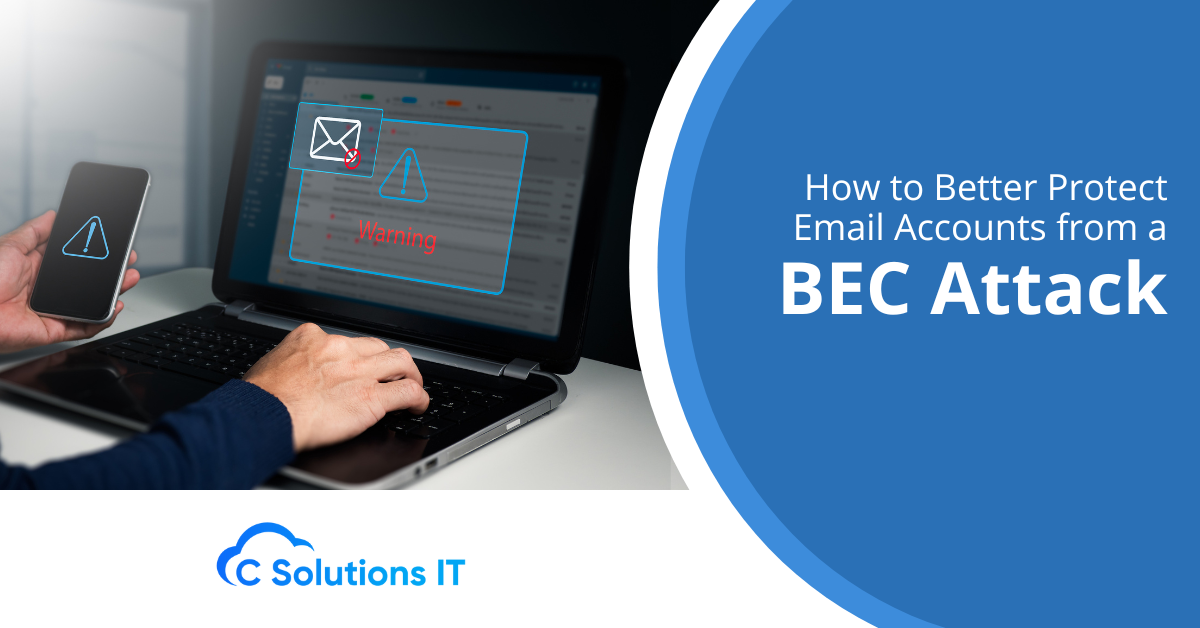How to Better Protect Email Accounts from a BEC Attack

Email has become an essential part of our daily lives, whether we are using it for personal communication or for business purposes. Unfortunately, it has also become a prime target for cybercriminals who use a variety of tactics to steal sensitive information, such as Business Email Compromise (BEC) attacks.
A BEC attack is a type of scam that targets businesses and organizations by impersonating a trusted party, such as a supplier or an executive, to trick the victim into making a wire transfer or divulging sensitive information. In this article, we will discuss how to better protect email accounts from a BEC attack.
Understanding Business Email Compromise (BEC) Attacks
A BEC attack typically begins with a cybercriminal gaining access to an email account by using methods such as phishing or social engineering. Once the attacker has access, they monitor the victim’s email communication to gather information about the company’s operations and employees. They then use this information to craft convincing emails that appear to come from a trusted party, such as a supplier or a senior executive.
The emails are usually designed to create a sense of urgency or panic, making the victim feel pressured to act quickly. For example, the email might request an urgent wire transfer to pay an outstanding invoice or a supplier who is threatening to stop providing goods or services. Alternatively, the email might contain a link to a fake login page designed to steal the victim’s credentials, giving the attacker access to more sensitive information.
BEC attacks can be extremely costly for businesses, with losses ranging from a few thousand dollars to millions of dollars. They can also damage a company’s reputation and cause significant financial and legal issues.
Protecting Email Accounts from BEC Attacks
There are several steps that individuals and organizations can take to level up their cybersecurity and better protect their email accounts from BEC attacks.
Implement Multi-Factor Authentication
One of the most effective ways to protect email accounts from unauthorized access is to implement multi-factor authentication (MFA). MFA requires users to provide two or more forms of authentication before they can access their email account. For example, a user might be required to provide a password and a code sent to their mobile phone.
MFA makes it much harder for cybercriminals to gain access to email accounts, even if they have obtained the victim’s password through a phishing attack or other means.
Train Employees to Recognize BEC Attacks
Employees are often the first line of defense against BEC attacks, so it is essential to provide them with training on how to recognize and respond to suspicious emails. This training should cover topics such as phishing, social engineering, and how to verify the authenticity of an email.
Employees should also be encouraged to report any suspicious emails to their IT department or security team. This can help to identify BEC attacks early and prevent them from causing significant damage.
Use Email Filtering and Anti-Spam Software
Email filtering and anti-spam software can help to identify and block suspicious emails before they reach the user’s inbox. These tools can detect and flag emails that contain suspicious links, attachments, or unusual language. They can also filter out known spam email addresses and domains.
By using email filtering and anti-spam software, organizations can reduce the risk of employees falling victim to BEC attacks.
Verify Requests for Sensitive Information or Wire Transfers
One of the most effective ways to prevent BEC attacks is to verify any requests for sensitive information or wire transfers. This can be done by implementing a two-factor approval process for any requests, which involves verifying the request with a senior manager or another trusted party.
It’s also important to establish clear policies and procedures for approving requests for sensitive information or wire transfers. These policies should be communicated to all employees and strictly enforced.
Regularly Update Security Software and Patches
Regularly updating security software and patches is another critical step in protecting email accounts from BEC attacks. Cybercriminals often exploit vulnerabilities in software to gain access to email accounts and sensitive information. By regularly updating security software and patches, organizations can ensure that they have the latest security measures in place to protect against cyber threats.
Use Encrypted Communication
Using encrypted communication can also help to protect email accounts from BEC attacks. Encrypted communication means that the email message is scrambled so that only the intended recipient can read it. This helps to prevent cybercriminals from intercepting and reading sensitive information.
Many email service providers offer encrypted communication as a feature, and it is essential to use it when sending sensitive information or financial transactions.
Conduct Regular Security Audits
Conducting regular security audits can help to identify potential vulnerabilities in email accounts and address them before they can be exploited. Security audits should include a review of email policies and procedures, access controls, and software and patch management.
By conducting regular security audits, organizations can stay ahead of cyber threats and ensure that their email accounts are adequately protected.
Protect Your Organization Today
BEC attacks are a significant threat to businesses and organizations of all sizes. However, by implementing these best practices, individuals and organizations can better protect their email accounts from BEC attacks.
It is essential to implement multi-factor authentication, train employees to recognize BEC attacks, use email filtering and anti-spam software, verify requests for sensitive information or wire transfers, regularly update security software and patches, use encrypted communication, and conduct regular security audits.
To learn more about how to better protect your email accounts from BEC attacks or other cyber threats, contact C Solutions today. Our team of cybersecurity experts can help you assess your organization’s security posture and develop a comprehensive cybersecurity strategy to keep your business and employees safe from cyber threats.
